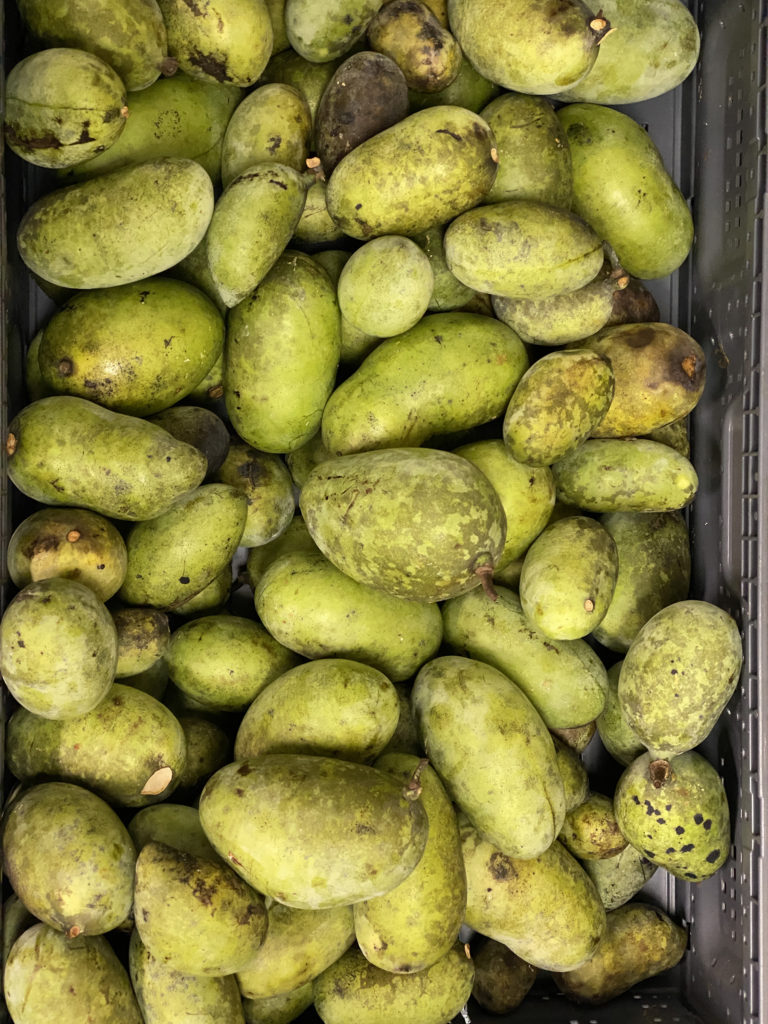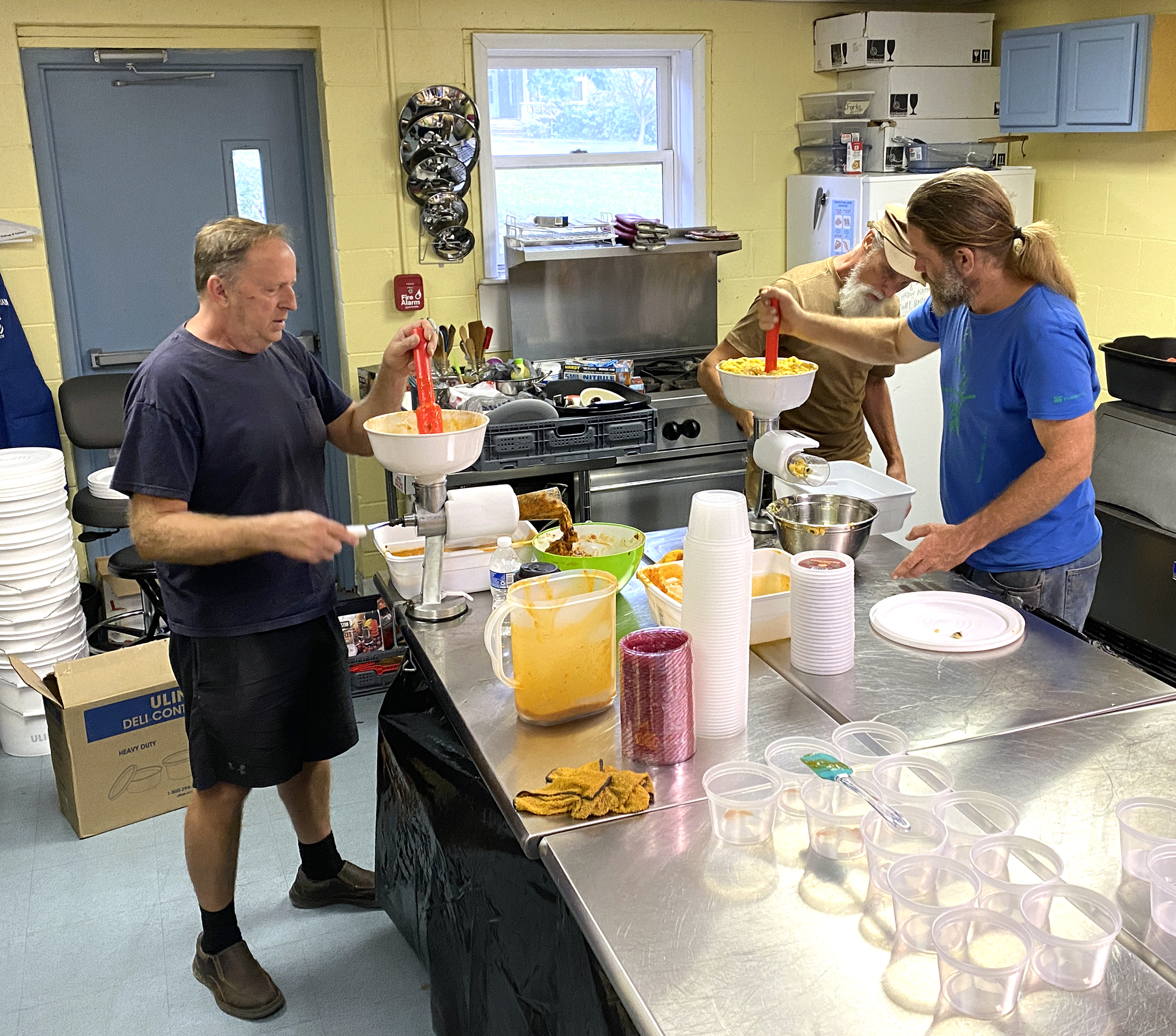By Miles Flynn | Southern Indiana Business Report
PAOLI — Just what is a pawpaw? Well, it’s North America’s largest native fruit, its taste is similar to the banana or mango, and pawpaws have more protein than most other fruits. Native Americans cultivated them, they were reportedly a favorite dessert of none other than George Washington, and the fruit helped sustain Lewis and Clark on their famous cross-country expedition. However, in the intervening centuries, the pawpaw’s story has largely been overlooked.
Today in Southern Indiana, though, Richard Owens and his three partners are on a mission to turn the fruit into a commercial enterprise through the new company they’ve launched as Hoosier Pawpaw: Home of the Indiana Banana. “We’re trying to make familiar a forgotten fruit that’s never gone away,” Owens told Southern Indiana Business Report.

Owens explained the fruit was pushed out of the spotlight as Europeans began to bring apples, pears and peaches to America’s shores. “The short shelf life of pawpaws didn’t make sense, I guess,” he commented.
As an early step in the enterprise, Owens set about boosting his supply about half a dozen years ago on his farm near Williams in western Lawrence County, planting an orchard of approximately 300 trees. He’s since convinced one Amish farmer in the area to plant 300 trees and another farmer is in the process of planting an orchard of similar size. “Even with 1,000 trees, you’re not going to have enough,” Owens said. “… As soon as they find out the profitability, they’ll plant more trees.”
One of his big successes was selling pawpaws to Bloomington-based Upland Brewing Company for its Pawpaw barrel-aged fruited sour ale. “I’ve literally sold them tons over the last several years,” Owens said. “Some years we just couldn’t get enough pawpaw.”
He said COVID-19’s effect on all restaurants helped throttle back the demand and allowed Upland to rely on its reserves. The change pushed innovation in finding new markets, leading to Hoosier Pawpaw and the introduction of its pulp product for consumers. “One customer does not a business make,” Owens said.
The labor-intensive process of removing the fruit’s many large seeds produces a pulp that is storable and “super versatile,” Owens said. It can be made into breads, smoothies and other dishes, and Hoosier Pawpaw recently began publicizing an ice cream recipe through its Facebook page. A pawpaw butter product is expected to be introduced in November. “What can’t you do with it?” Owens asked.
Processing and packaging operations, began late this summer in the community kitchen that opened earlier this year in Paoli as a launching pad for culinary businesses. (More information on the community kitchen can be found in this earlier story on the effort.) “It’s an amazing asset for the community for sure,” Owens said of the kitchen.
About a dozen workers are involved in the process. So far, the one-pint packages of the pawpaw pulp and the persimmon pulp the business also offers are available across the street from the community kitchen at Lost River Market & Deli. (Southern Indiana Business Report previously explored the food cooperative’s initiatives in community supported agriculture.) “The reaction at this market has been very good,” Owens shared. “They’re selling quite a few units. I was very surprised and happy for that.”
Work is underway on adding the pawpaw products at Bloomingfoods in Bloomington and at Baesler’s Market in Sullivan and Terre Haute. T-shirts with the Hoosier Banana slogan — a homage to the pawpaw’s importance to earlier Indiana settlers — are also available, and the company sells pawpaw seeds.
Owens said the uniqueness of the pawpaw is a big selling point and also makes the ingredient attractive to restaurants. The company’s goal is that, with growth, it will open up its own commercial kitchen someday. Owens, who won the largest pawpaw prize in 2019 at the annual Ohio Pawpaw Festival, is hopeful Hoosier Pawpaw’s efforts will help transform Southern Indiana into the epicenter of the pawpaw world again. “The abundance here is amazing,” he commented.



